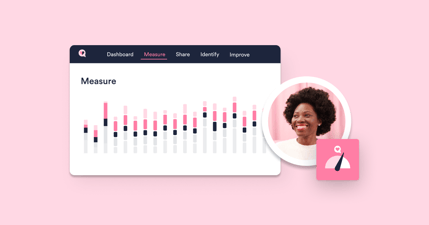How to Make IT Experience Management (ITXM) Quick Wins
This blog provides practical steps for achieving ITXM quick wins, helping IT teams transition from theory to real-world impact. By demonstrating value early, organizations can secure stakeholder buy-in and build momentum for long-term ITXM success.

Quick wins have long been a staple in the IT service management (ITSM) space. An organization wants to do something new, and quick wins allow it to swiftly prove the concept through rapid success. Delivering the promised benefits while helping stakeholders buy into and build upon the change(s). Quick wins play the same role when adopting IT experience management (ITXM) capabilities. They allow your IT organization to quickly move beyond the theory and customer case studies to demonstrate the value of ITXM. Importantly, ITXM quick wins can be made without extensive improvement resources or time.
This blog explains how to make ITXM quick wins happen in your organization. If you also want to learn more about ITXM, this HappySignals ITXM Framework™ page will be helpful.
“More haste, less speed”
There’s a quaint British phrase – “more haste, less speed” – that can be confusing when English isn’t your first language. It means that if you attempt to do things too quickly, it might take you longer in the end. Its origin was because speed’s dated meaning was “success” or “luck.” However, people still use the phrase today, and it definitely applies to quick wins!
In the case of ITXM quick wins, rushing to deliver quick wins shouldn’t be at the expense of creating and following a corporate ITXM strategy. What this involves is detailed in this “How to Create an ITXM Strategy” blog, with a key success factor being the decisions around defining ITXM’s objectives. There can be many, including:
- Aligning IT operations and services with business needs
- Improving experiences (for service receivers and providers)
- Improving efficiency and outcomes
- Making data-informed decisions with experience data.
It might sound silly, but this sense of purpose or direction must exist for ITXM quick wins, let alone a larger ITXM initiative, to succeed.
Deciding on the right experience metrics
No matter the chosen quick win(s), there’s a need to measure success. The selected metrics should sufficiently articulate how employees or end-users feel about the IT services they consume and how they impact their ability to work.
During the last ten years, HappySignals decided upon two key experience metrics through its research and work with customers:
- Happiness Score – how satisfied end-users are with IT services using a net promoter score (NPS) approach
- Lost time – the perceived level of productivity end-users lose due to IT issues.
These two metrics power customer ITXM initiatives, including any quick wins they’ve employed. After the initial capture of experience data, your organization is then best positioned to understand where end-user issues and pain points lie and where the ITXM quick wins lie.
Identifying the “low-hanging fruit” for ITXM quick wins
Here’s another strange English phrase! Although it’s relatively easy to imagine the origins of “low-hanging fruit” as relating to something easy to obtain or achieve. For example, picking the apples off the lowest branches of a tree, i.e. the low-hanging fruit.
In the context of ITXM quick wins, these are the opportunities to enhance end-user experiences that can be achieved relatively easily while delivering significant improvements or benefits. It’s ultimately part of your organization’s ITXM prioritization process.
There might also be an overlap with traditional ITSM quick wins. For example, your IT organization might already undertake periodic improvement activities such as problem management or simply identifying frequent incident causes and working to either remove them or provide rapid resolutions.
There’s a (big) difference, though
The traditional IT performance measures that drive the ITSM quick wins are likely focused on the “mechanics” of IT service delivery and support. They usually report volumes and speeds, such as the average handling time for incidents or service requests. They also miss many of the issues that end-users face – the issues that cause them to value IT less or lose productivity.
Experience data highlights these overlooked end-user issues and pain points. It also allows IT organizations to better understand what matters most to the end-users. For example, your IT service desk might consistently reduce its cost per ticket. This might look great for IT’s budget, but how does this “improvement” affect end-users? Are they losing more time to their IT issues and having worse experiences? And, importantly, is what IT “saves” outweighed by the business cost of the increased end-user productivity losses?
Additionally, end-users likely don’t care if the cost per ticket has dropped, especially if the change is adversely affecting their ability to be productive.
Examples of ITXM quick wins
The best ITXM quick wins will differ across organizations, not least because these organizations will likely have different ITSM capabilities, issues, and priorities. Your IT organization’s experience data will dictate where the key issues are based on what matters most to your end-users. However, some ITXM quick-win opportunities are more prevalent than others.
The time and costs involved in addressing these “common” ITXM quick wins might also differ significantly, such that one organization’s quick win might be another’s longer-term ITXM initiative. However, when viewed with localized experience data, they can be a good starting point for deciding where to start with ITXM through quick wins.
Examples of “common” ITXM quick wins include:
- Reducing the delays and errors caused by manually-intensive repetitive tasks and processes. Automation will help – for example, with password resets, software provisioning, and automated ticket triage. This improves IT efficiency and reduces end-user frustration with unwarranted delays.
- Improving communications. Managing people’s expectations isn’t anything new. Still, it might be an operational area that’s quick to improve simply by keeping end-users informed of how long their issue or service request will take to resolve (along with providing progress updates).
- Better aligning IT self-service capabilities with end-user expectations. The issue with traditional IT self-service portals is probably a blog in itself. There have been so many issues caused by the disconnect between what IT sees as self-service and end-user expectations. Experience data will shed light on what’s wrong with your IT organization’s IT self-service capabilities, with some of the opportunities to improve possibly through ITXM quick wins. This area has long been an issue for our customers, with IT increasing self-service adoption levels, but end-users lose more time and productivity (with self-service) than if they phoned or even emailed the IT service desk.
- Identifying required IT support training – at individual and team levels. Experience data highlights where individuals and teams fail to deliver quick resolutions or suitable experiences (or both). This ITXM quick win helps rectify the factors causing end-user issues, improving IT operations and business outcomes.
But, as stated earlier, these are just “common” ITXM quick-win examples. Your IT organization will have its own needs and opportunities that can only be determined with localized experience data.
The value of ITXM quick wins is in action
Again, I feel somewhat silly stating this – identifying possible ITXM quick wins is great, but nothing changes until actions are successfully taken. The same ITXM metrics used to identify the quick wins should be used to measure their impact, with the comparison of before-and-after experience data used to demonstrate the improvements.
As per another somewhat strange term – “If a tree falls in a forest and no one is around to hear it, does it make a sound?” – a key part of ITXM quick win success is communicating the results with key business stakeholders, not only in terms of the improvements to experience indicators but also how the quick win success aligns with business goals.
Finally, remember that ITXM quick wins are merely the start
While the quick win success is a good result for your IT organization (and the people it serves), the aim for your quick wins should be building momentum for long-term ITXM success. This is hopefully more than simply fixing the issues end-users face; instead, it’s a step toward changing how your IT organization is run – from technology (or service) focused to human-centric and experience-driven.
To learn more about how ITXM will help your organization and how other customers have leveraged ITXM quick wins to propel their experience management journey forward, take a look at our ITXM Framework.
You may also like to:
- Watch this video on how ITXM Drives Better Decision-Making
- Take a look at these Practical Examples of Using ITXM in decision-making
- Read this blog on Better IT Decision-Making Through Experience Data and Insight
- Read these 12 Tips for Better IT Decision-Making Using Experience Data
Related content

16.01.2025
Practical Examples of Using ITXM in IT Decision Making
In today’s IT landscape, delivering a seamless and satisfying user experience has become as critical as meeting ...
Read more >
27.06.2024
12 Tips for Better IT Decision-Making Using Experience Data
So you’ve been convinced of the importance of experience data and insight to IT decision-making, but what must you do ...
Read more >